Numerical Simulation Study on the Law of Attenuation of Hydrate Particles in a Gas Transmission Pipeline
Abstract
:1. Introduction
2. Model Establishment
2.1. Physical Model
2.2. Mathematical Model
2.3. Boundary Conditions
2.4. Grid Independence Verification
2.5. Model Verification
3. Results and Discussion
3.1. Swirl Number
3.1.1. Definition
3.1.2. The Two-Phase Flow of Gas-Solid Swirl Number Calculation Formula
3.2. Cyclone Number Attenuation Law
3.2.1. Effect of Twist Rate on the Attenuation of Swirl Number
3.2.2. Effect of Reynolds Number on the Decay of the Swirl Number
3.2.3. Effect of Hydrate Particle Concentration on the Decay of Swirl Number
3.3. Cyclone Number Attenuation Law
3.3.1. Influence of Reynolds Number on the Decay Rate of the Swirl Number
3.3.2. Effect of Initial Concentration of Hydrate Particles on the Decay Rate of the Swirl Number
3.3.3. Influence of Flow Distance on the Attenuation Rate of the Swirl Number
3.4. Shear Force
3.4.1. Effect of Twist Rate on Shear Force
3.4.2. Effect of Reynolds Number on Shear Force
3.5. Effect of Twist Rate on Volume Fraction Distribution of Hydrate Particles
3.6. Effect of Particle Volume Concentration on Hydrate Particle Deposition
4. Conclusions
Author Contributions
Funding
Acknowledgments
Conflicts of Interest
References
- Hammerschmidt, E.G. Formation of gas hydrates in natural gas transmission lines. Ind. Eng. Chem. 1934, 26, 851–855. [Google Scholar] [CrossRef]
- Panter, J.L.; Ballard, A.L.; Sum, A.K.; Sloan, E.D.; Koh, C.A. Hydrate plug dissociation via nitrogen purge: Experiments and modeling. Energy Fuels 2011, 25, 2572–2578. [Google Scholar] [CrossRef]
- Lv, Y.; Guan, Y.; Guo, S.; Ma, Q.; Gong, J.; Chen, G.; Sun, C.; Guo, K.; Yang, L.; Shi, B.; et al. Effects of Combined Sorbitan Monolaurate Anti-Agglomerants on Viscosity of Water-in-Oil Emulsion and Natural Gas Hydrate Slurry. Energies 2017, 10, 1105. [Google Scholar] [CrossRef]
- Gong, J.; Shi, B.H.; Lv, X.F. Gas hydrate formation and hydrate slurry flow in multiphase transportation system. J. China Univ. Petroleum (Ed. Nat. Sci.) 2013, 37, 163–167. [Google Scholar]
- Zerpa, L.E.; Salager, J.L.; Koh, C.A.; Sloan, E.D.; Sum, A.K. Surface chemistry and gas hydrates in flow assurance. Ind. Eng. Chem. Res. 2010, 50, 188–197. [Google Scholar] [CrossRef]
- Shi, B.H.; Quan, K.; Qiao, G.C. Prevention measures for hydrate ice blockage in Yu-Ji Gas Pipeline. Oil Gas Storage Transp. 2014, 33, 274–278. [Google Scholar]
- Chen, P.; Liu, W.F.; Li, Y.X. Numerical simulation of hydrate slurry flow behavior. Oil Gas Storage Transp. 2014, 33, 160–164. [Google Scholar]
- Wang, S.L.; Rao, Y.C.; Zhang, L. Research Status and Development of Swirl Flow Characteristics in Horizontal Pipes. J. Taiyuan Univ. Technol. 2013, 44, 232–236. [Google Scholar]
- Wang, Y.Y.; Zhang, X.; Jiang, S.Y. Swirl intensity calculation of double-cone fine coal combustion chamber. Clean Coal Technol. 2013, 19, 79–84. [Google Scholar]
- Wu, L.P.; Peng, L.S. Formation and attenuation of swirl flow in horizontal tubes. J. Taiyuan Univ. Technol. 1997, 28, 32–35. [Google Scholar]
- Kreith, F.; Sonju, K. The decay of a turbulent swirl in a pipe. J. Fluid Mech. 1965, 22, 257–271. [Google Scholar] [CrossRef]
- Kitoh, O. Experimental study of turbluence swirling flow in a straight pipe. J. Fluid Mech. 1991, 225, 445–479. [Google Scholar] [CrossRef]
- Steenbergen, W.; Voskamp, J. The rate of decay of swirl in turbulent pipe flow. Flow Meas. Instrum. 1998, 9, 67–78. [Google Scholar] [CrossRef]
- Zhang, L.L.; Zhang, Y. Flow field and flow characteristics of swirl flow section in pipeline. Rural Water Hydropower 2011, 9, 48–50. [Google Scholar]
- Wen, Z.; Liang, C.; Ren, Y.R. Fluent Fluid Computing Application Tutorial; Tsinghua University Press: Beijing, China, 2009. [Google Scholar]
- Liu, W.; Bai, B.F. Swirl decay in the gas–liquid two-phase swirling flow inside a circular straight pipe. Exp. Therm. Fluid Sci. 2015, 68, 187–195. [Google Scholar] [CrossRef]
- Najafi, A.F.; Mousavian, S.M.; Amini, K. Numerical investigations on swirl intensity decay rate for turbulent swirling flow in a fixed pipe. Int. J. Mech. Sci. 2011, 53, 801–811. [Google Scholar] [CrossRef]
- Wang, S.; Rusak, Z. The effect of slight viscosity on a near-critical swirling flow in a pipe. Phys. Fluids 1997, 9, 1914–1927. [Google Scholar] [CrossRef]
- Lv, X.; Shi, B.; Zhou, S.; Wang, S.; Huang, W.; Sun, X. Study on the Decomposition Mechanism of Natural Gas Hydrate Particles and Its Microscopic Agglomeration Characteristics. Appl. Sci. 2018, 8, 2464. [Google Scholar] [CrossRef]
- Rao, Y.; Wang, Z.; Wang, S.; Yang, M. Investigation on Gas Hydrate Slurry Pressure Drop Properties in a Spiral Flow Loop. Energies 2018, 11, 1384. [Google Scholar] [CrossRef]


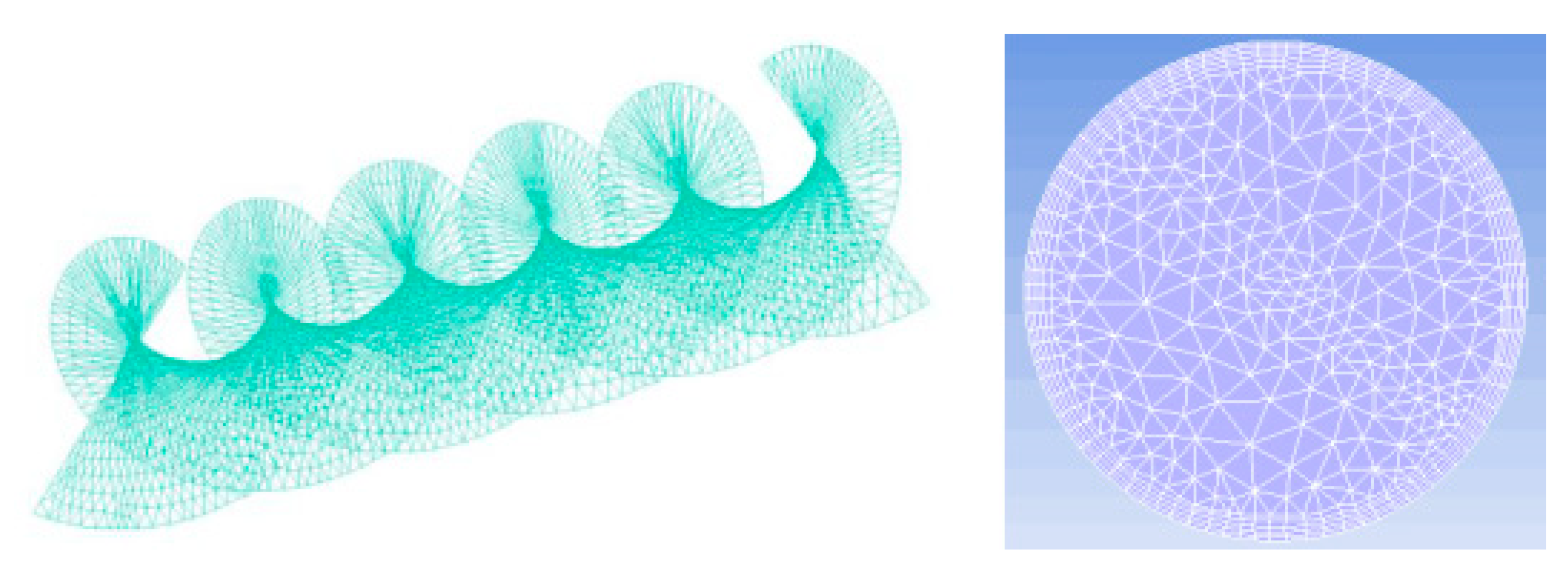
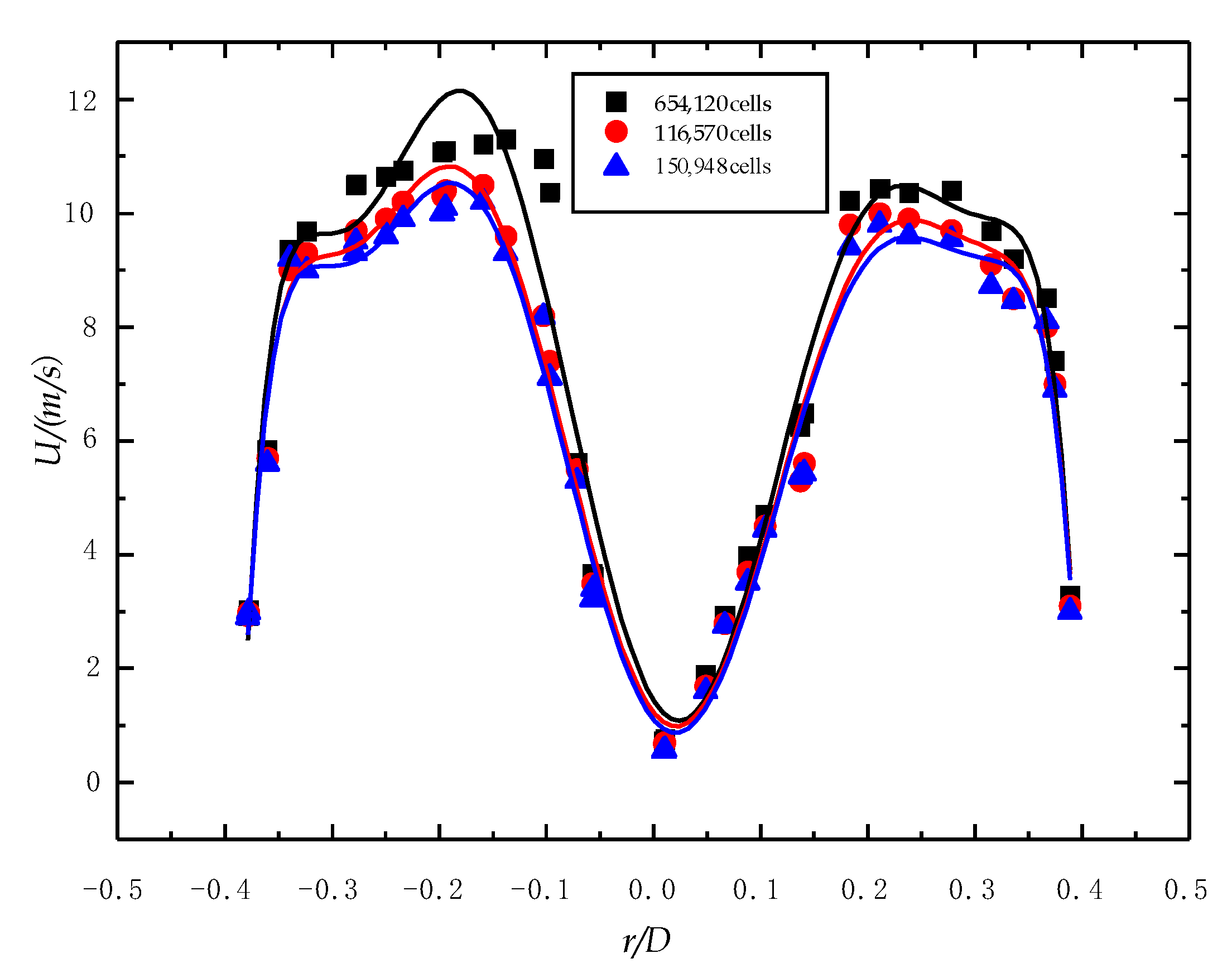

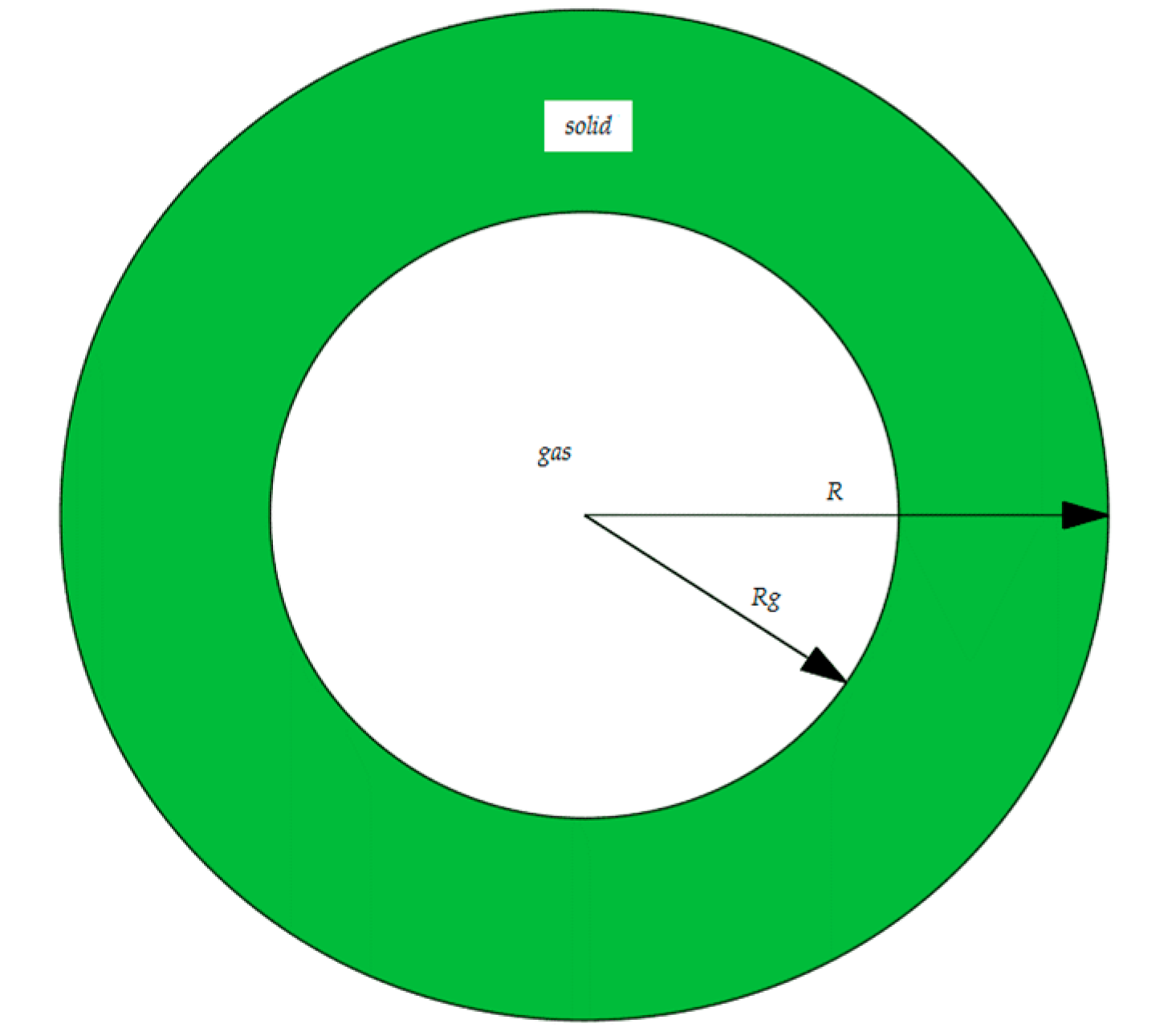

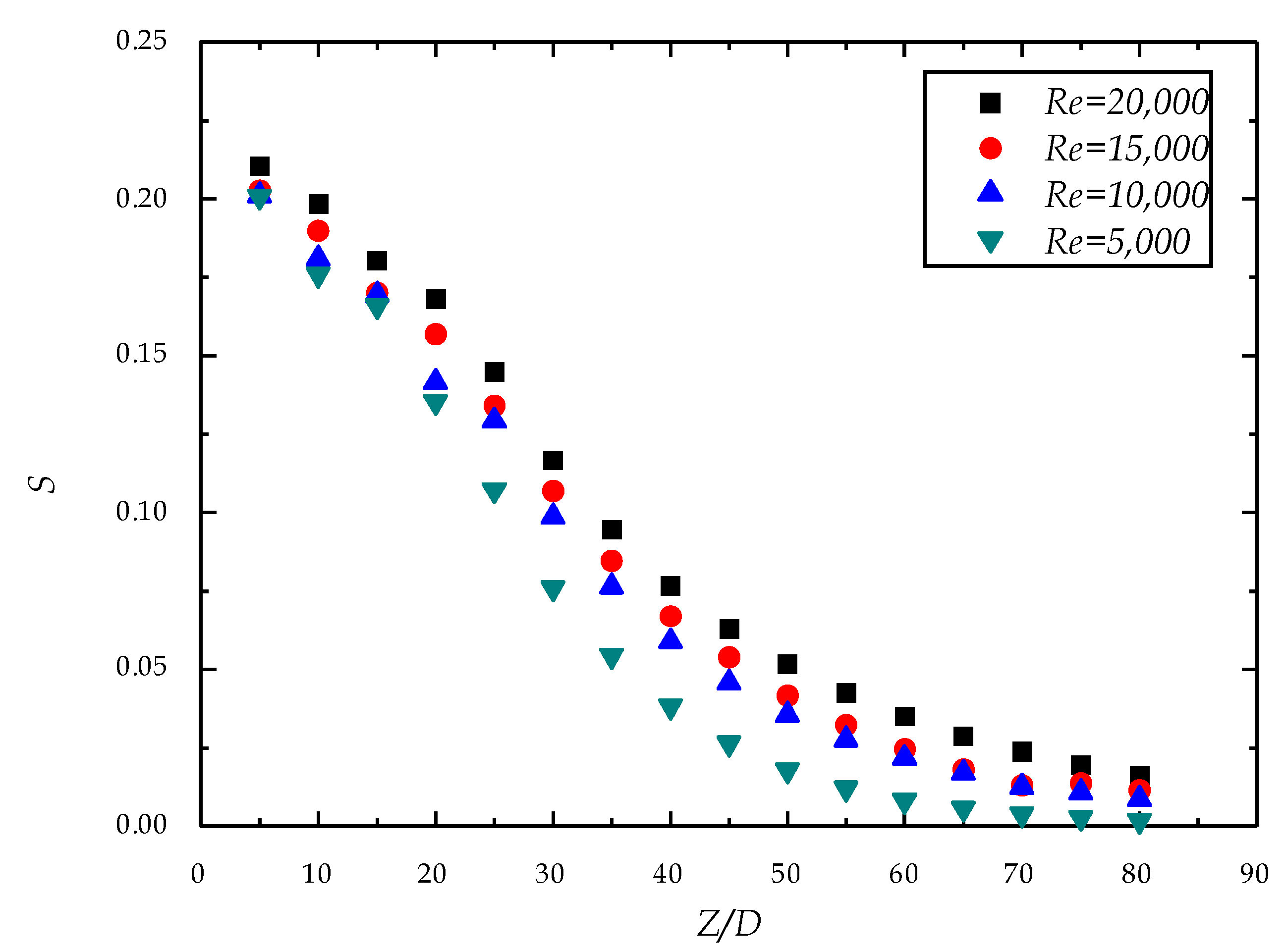


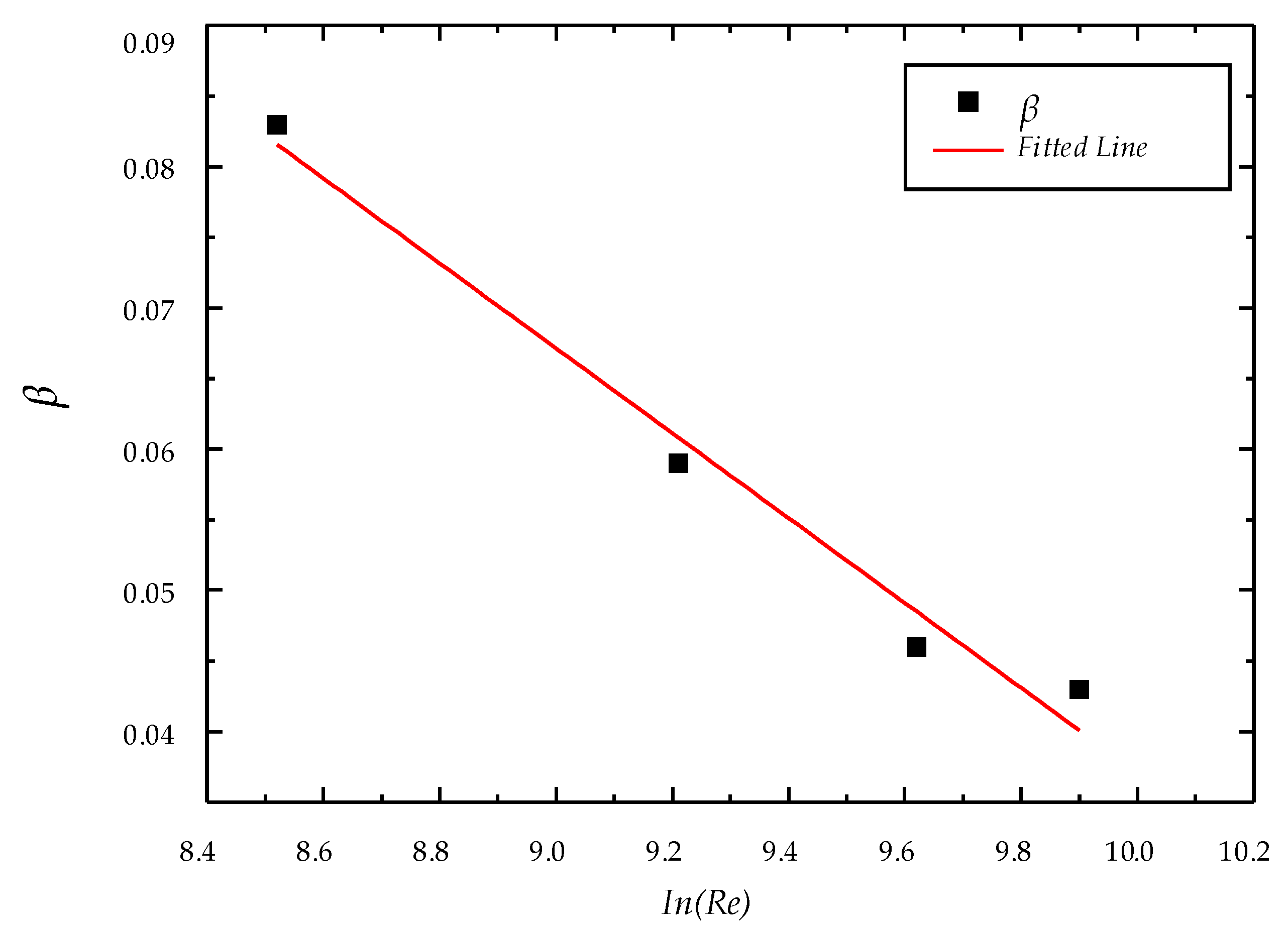
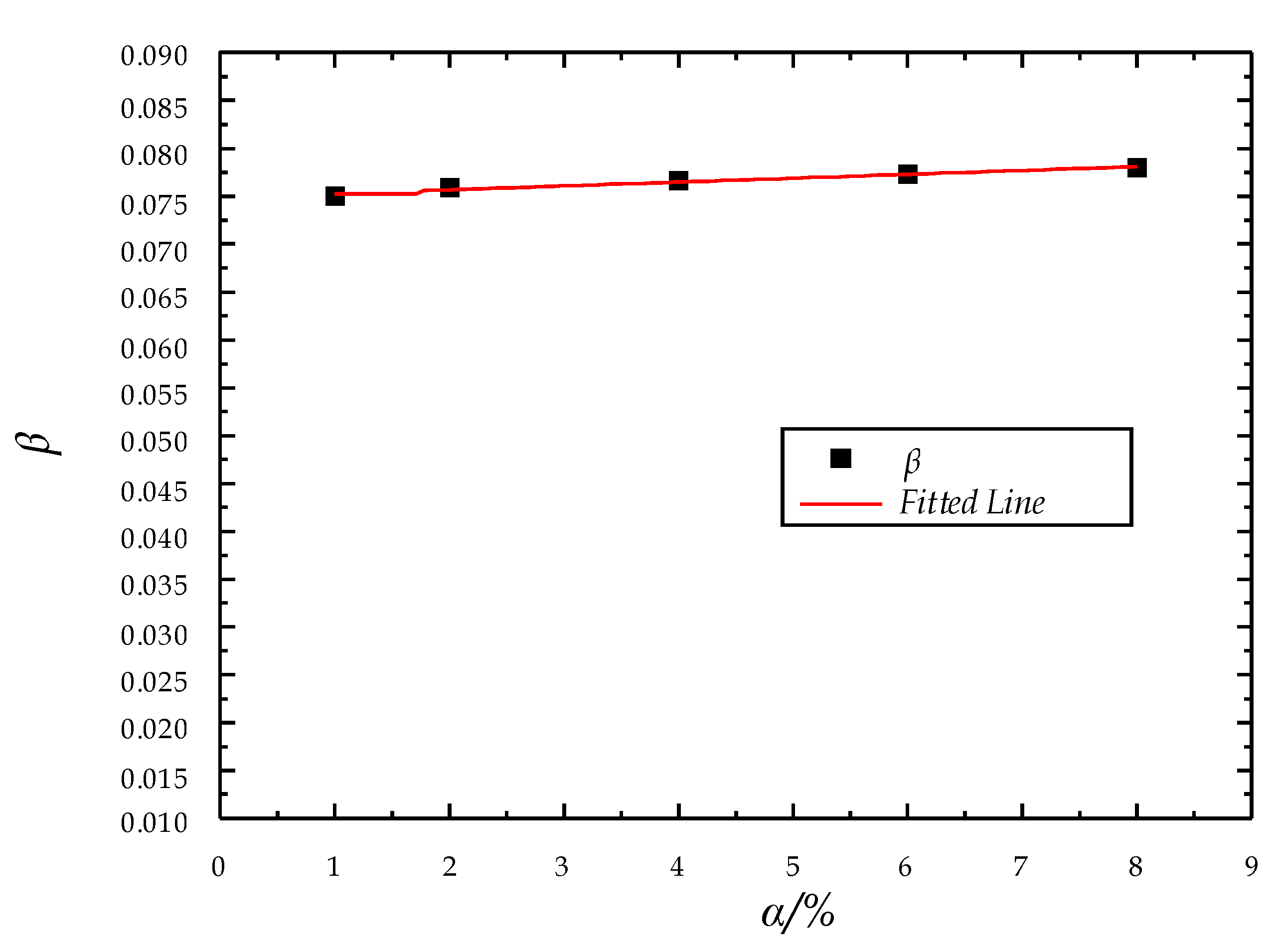
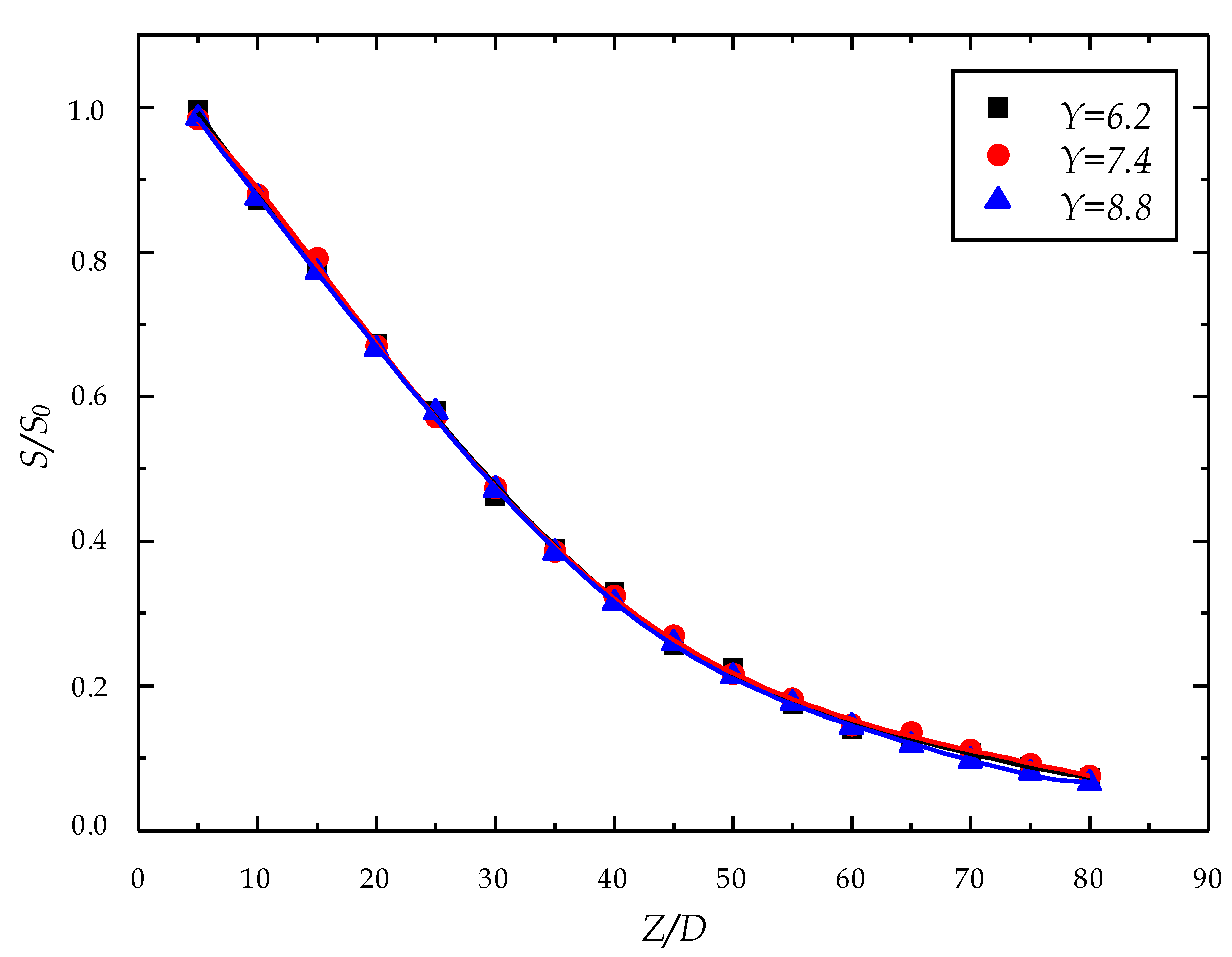
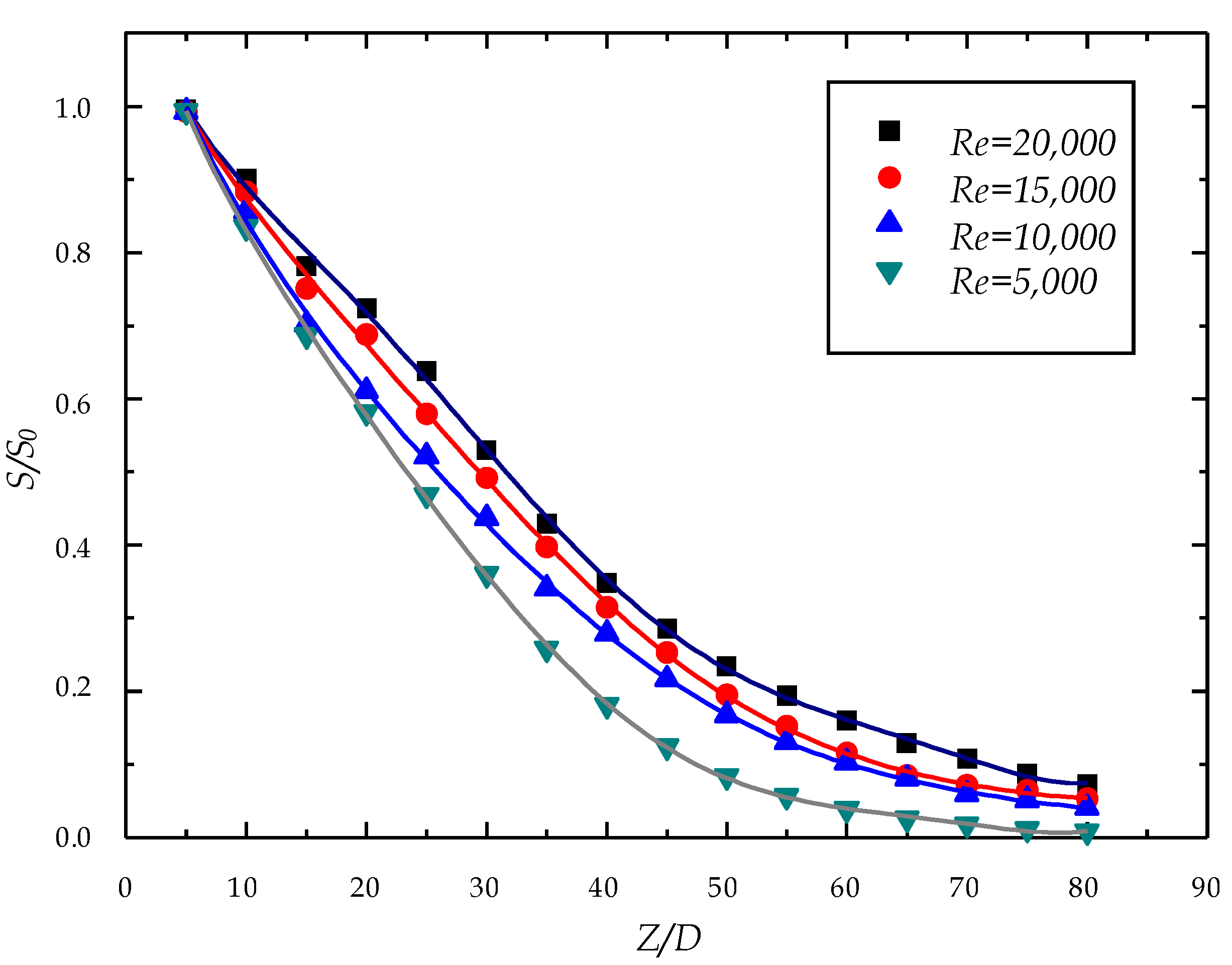

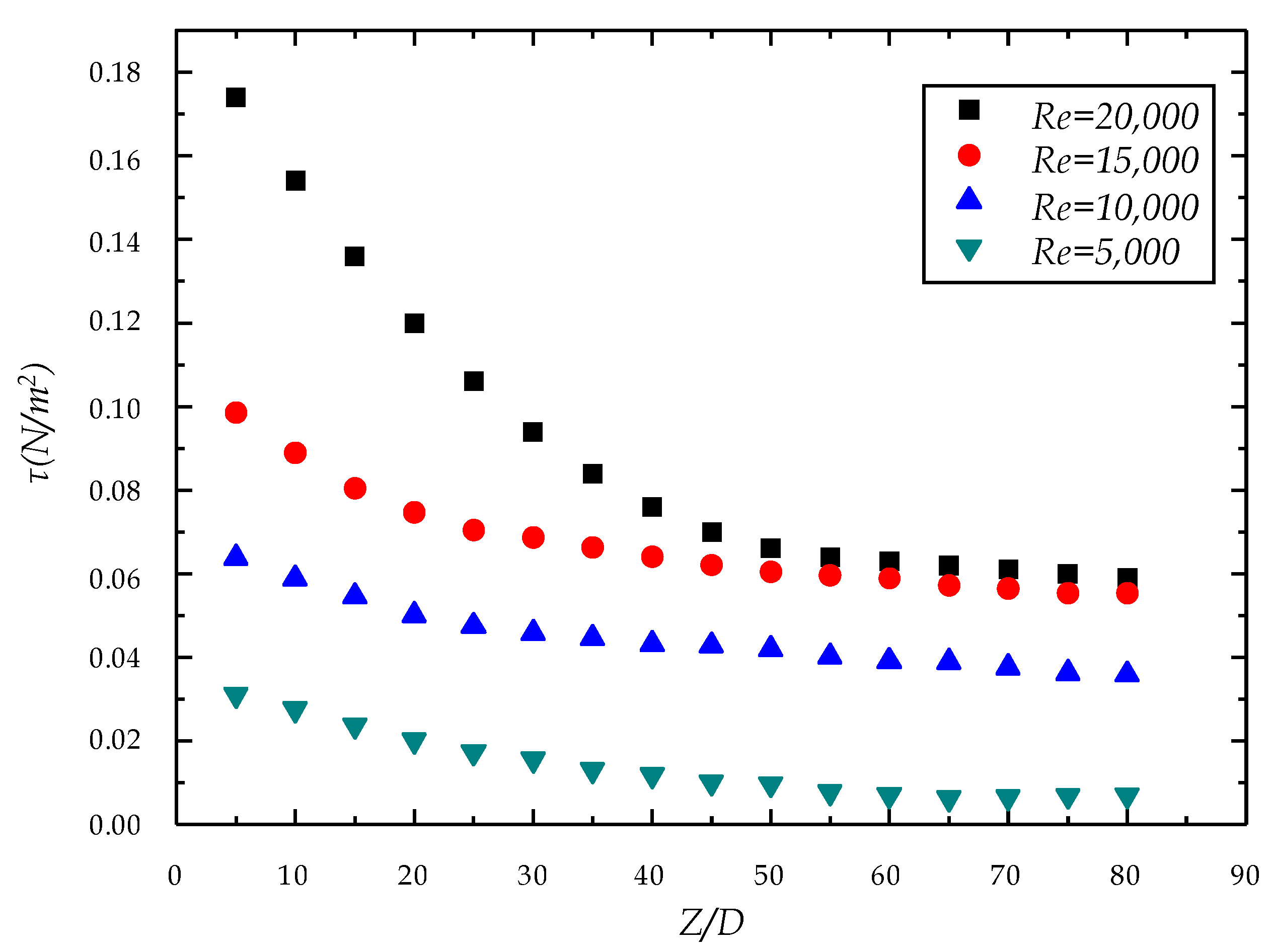

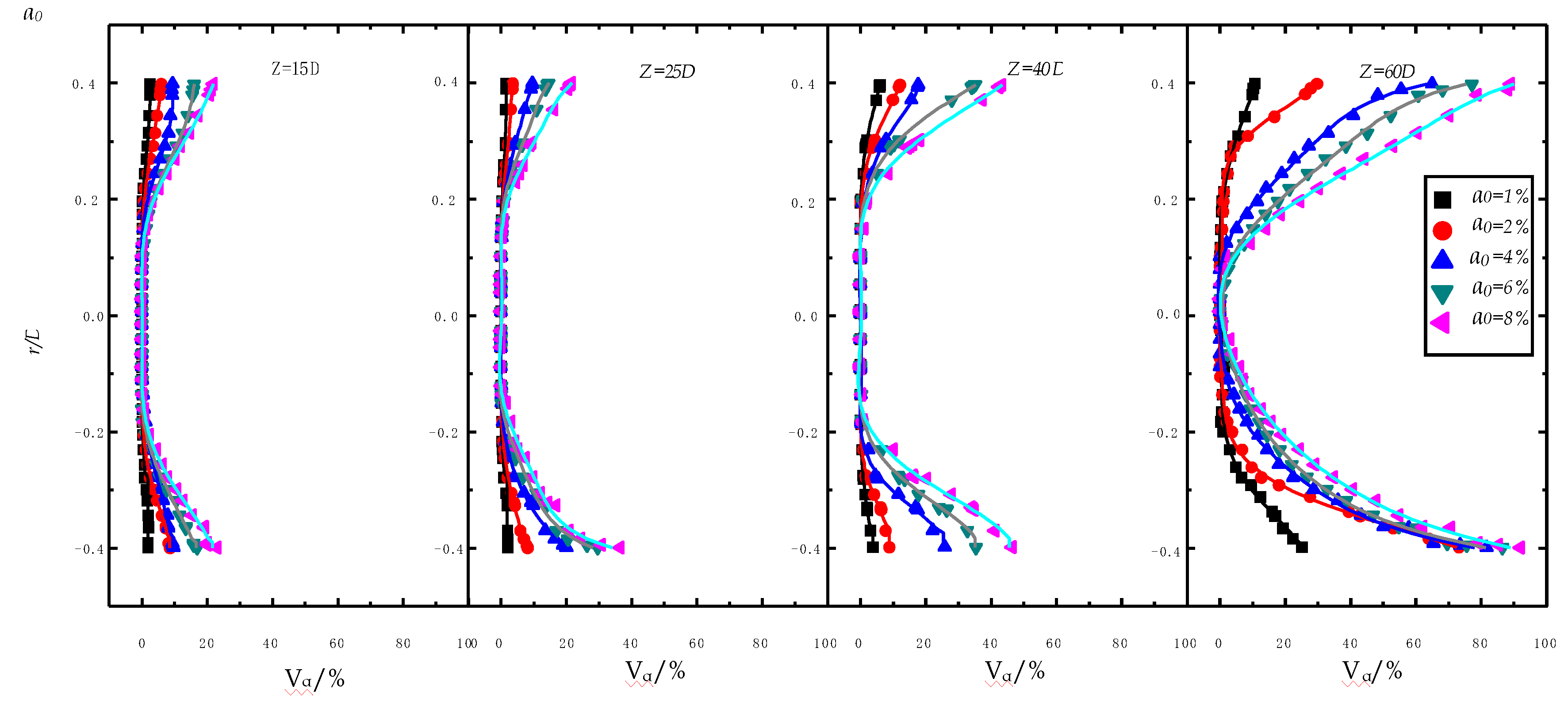
© 2018 by the authors. Licensee MDPI, Basel, Switzerland. This article is an open access article distributed under the terms and conditions of the Creative Commons Attribution (CC BY) license (http://creativecommons.org/licenses/by/4.0/).
Share and Cite
Yongchao, R.; Yi, S.; Shuli, W.; Ru, J. Numerical Simulation Study on the Law of Attenuation of Hydrate Particles in a Gas Transmission Pipeline. Energies 2019, 12, 58. https://doi.org/10.3390/en12010058
Yongchao R, Yi S, Shuli W, Ru J. Numerical Simulation Study on the Law of Attenuation of Hydrate Particles in a Gas Transmission Pipeline. Energies. 2019; 12(1):58. https://doi.org/10.3390/en12010058
Chicago/Turabian StyleYongchao, Rao, Sun Yi, Wang Shuli, and Jia Ru. 2019. "Numerical Simulation Study on the Law of Attenuation of Hydrate Particles in a Gas Transmission Pipeline" Energies 12, no. 1: 58. https://doi.org/10.3390/en12010058



